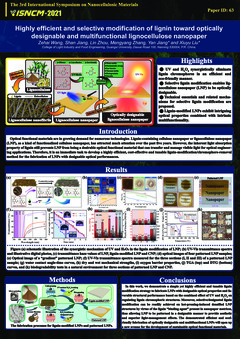
Conference Guide(参会指南): https://isncm2021.aconf.org/news.html
November 19-21, 2021 | Guangzhou, China

Start Time:2021-11-20 19:10 (Asia/Shanghai)
Duration:10min
Session:[Po1] The 3rd International Symposium on Nanocellulosic Materials-poster1 (ROOM1) » [PS1] Poster Session 1
Tips: The file permissions under this presentation are private. You have not logged in yet and cannot view it temporarily.

Comment submit